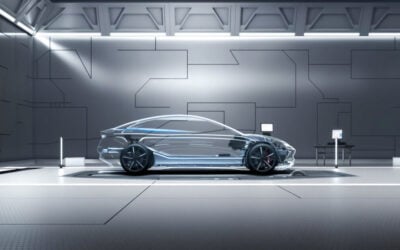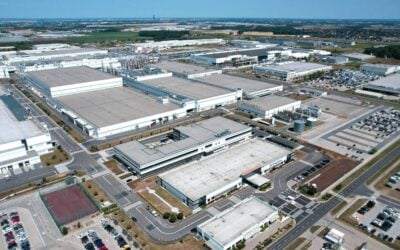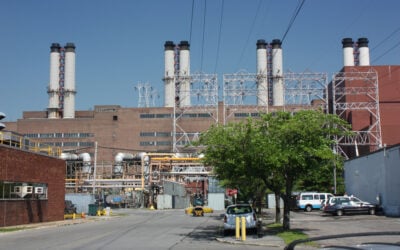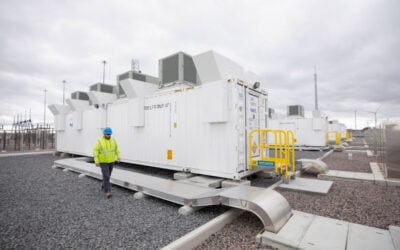New York's iconic yellow taxi cabs Image: wikimedia user: chevronz.
In light of the Paris COP21 climate conference, New York City announced plans to incorporate 2,000 electric vehicles (EVs) into its municipal fleet by 2025. New York City claims this move will make it the largest EV fleet operator in the world. New York City already operates a fleet of 27,000 vehicles, which contributes to 4% of the entire city’s on-road transportation greenhouse gas emissions. The 2,000 EVs will primarily go towards nonemergency vehicles, as commercially available EVs do not meet city requirements for emergency vehicles. The city will appoint an EV taskforce to design and manage phase-in plans for each agency, oversee the roll out of charging infrastructure, and issue several Request for Information (RFI) processes for things like charging and hydrogen fueling infrastructure.
Overall, New York City’s announcement is welcome news, as it becomes the second major U.S. city, after Los Angeles, to make a broad commitment to fleet electrification. Despite aiming to be the largest EV fleet, NYC’s plan is far from aggressive. At 2,000 EVs in 10 years, New York City’s fleet would have just an 18% penetration rate into the passenger vehicle part of its fleet (and a 7% penetration of its fleet as a whole, which also includes additional types of vehicles).
Enjoy 12 months of exclusive analysis
- Regular insight and analysis of the industry’s biggest developments
- In-depth interviews with the industry’s leading figures
- Annual digital subscription to the PV Tech Power journal
- Discounts on Solar Media’s portfolio of events, in-person and virtual
As the Paris COP 21 forum has reinforced, there is a need for greater action by governments to curb greenhouse gas emissions. Transportation alone accounts for 27% of the U.S.’s greenhouse gas emissions. While there is significant regional variance, EVs can be a key enabler in reducing greenhouse gas emissions. However, that environmental impact strongly depends on the source of electricity used to charge EVs. Looking forward, the future of power generation is likely to be both cleaner and more distributed which should further enable EV adoption, and make recharging less dependent on electricity generated from fossil fuels.
China and other regions are also deploying fleets of electric vehicles.
While New York City is going beyond just purchasing these vehicles in establishing RFIs and rolling out charging infrastructure, further action is required for this city to catalyse EV adoption on behalf of other municipalities and the private sector. New York City is addressing the low-hanging fruit with its procurement of 2,000 nonemergency passenger vehicles, but rather than issuing RFIs in a vacuum, the city should be working with forward thinking cities, states, and private sector fleet operators to aggregate buying power. There are key white spaces in EV adoption like police cars and several commercial vehicle types, and a unified customer class could help accelerate their adoption.
In this proposed partnership, the consortium could publish key performance metrics for developers to achieve, much like the U.S. Advanced Battery Consortium, whose strategic vision is to promote “long-term R&D within the domestic electrochemical energy storage (EES) industry and to maintain a consortium that engages automobile manufacturers, EES manufacturers, the National Laboratories, universities, and other key stakeholders”, launched by the United States Council for Automotive Research. However, given the collective buying power, the parties could agree to a volume-based deal if metrics were hit. The act of publishing key performance requirements with the prospect of sizeable volumes would spur innovation amongst technology developers and even larger OEMs to help build the electric fleet of the future.
New York City has an opportunity to lead the wave of municipalities in electric transportation, and while its initial commitment would likely make it the largest electric fleet operator, it should be much more aggressive in leveraging its buying power and budget to accelerate EV adoption. The city has already botched the Taxi of Tomorrow project, opting for comfort over efficiency (effectively choosing a plain internal combustion engine over a much more efficient hybrid, or some other form of electrification). However, a very similar process to the Taxi of Tomorrow – soliciting RFPs and inviting automotive OEMs to compete for purchase orders – could be reapplied to spur adoption of vehicles where electrification is not an option today.
Beyond aggregating buying power, New York City should leverage its public investment in charging infrastructure to support private sector and resident adoption. If executed properly, New York City’s electric vehicle program could be a galvanising force for hundreds of thousands of vehicles in the next decade, but under its current vision the city risks missing the bigger opportunity.
A competition to develop a 'Taxi of Tomorrow' for New York was botched. Image: wikimedia user: Mr.choppers.






